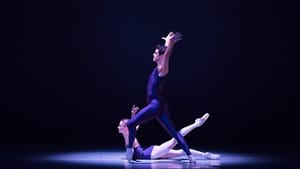Stay in the Loop
BSR publishes on a weekly schedule, with an email newsletter every Wednesday and Thursday morning. There’s no paywall, and subscribing is always free.
Going home again
Prokofiev’s 'Prodigal Son' at the Pennsylvania Ballet (first review)

The Pennsylvania Ballet, it’s good to report, is in capable hands with its new artistic director, Angel Corella, as evidenced in a varied program at the Merriam Theater last week. The principals and soloists were excellent, the corps de ballet fluent and expressive, and the musical support much improved. The company is now a major cultural asset of the city.
Its midwinter program began with Christopher Wheeldon’s Polyphonia, a work set to piano pieces by György Ligeti (extremely well played by Martha Koeneman). This is music of density and substance rather than easy fluidity, and Wheeldon’s choreography responded to its expressive spikiness. Particularly compelling was the duet between principal Lauren Fadeley and soloist James Ihde set to the Arc-en-ciel from Ligeti’s first book of Études, but there were fine duets throughout, and, at the end, a superbly effective image of angelic union.
Mozart was the source for the premiere of resident choreographer Matthew Neenan’s Shift to Minor, featuring a fine violin solo by Luigi Mazzocchi. It is a deft and agreeable work that puts the corps through its paces nicely, though without much challenge or edge.
The major work on the program was Sergei Prokofiev’s rarely performed Prodigal Son, which recounts the tale of the repentant runaway. We think of Prokofiev in terms of his evening-length ballets, Romeo and Juliet and Cinderella, which brilliantly extend the Tchaikovskian ballet tradition. The shorter works of his earlier, Paris-based period — Ala and Lolly, Chout, The Steel Step, and The Prodigal Son — are, by contrast, cast in the mold of Stravinsky (although by the time of The Prodigal Son, Stravinsky had made his own homage to Tchaikovsky in The Fairy’s Kiss). If we consider Tchaikovsky the grand sire of modern ballet tradition, should we consider Stravinsky and Prokofiev the prodigals beginning their own journey home in the late 1920s? It’s a thought.
Diaghilev’s successor
Like Stravinsky, Prokofiev had worked with Diaghilev, who died in the year of The Prodigal Son’s production, 1929. For his new ballet, Prokofiev worked with a young Russian choreographer, George Balanchine. Prokofiev’s score is rather a transitional work, with his trademark punchiness and dissonance softened by a new lyricism. Ironically, the former enfant terrible was unhappy with Balanchine’s Modernist take on the music and his transformation of the siren who lures the young protagonist into a kind of Wicked Witch of the West. The work clearly needs this kind of dramatic tension, however, and Fadeley superbly realized the role of the mocking temptress. As the Son, Alexander Peters is called upon for everything from wild leaps to anguished slithers across the stage. His performance fully met the technical and dramatic challenges. The Son will return home chastened but richly if painfully experienced, too. No pain, no gain; the boy comes back, but the man has been born within.
The first two works on the program relied on Holly Hynes’s fine costuming and Mark Stanley’s lighting to define the bare stage, but The Prodigal Son utilized the magnificent sets created for the original production by Georges Rouault, as fresh and dazzling as they must have seemed in the Paris premiere. Balanchine’s choreography, not only for the principals but the splendidly drilled corps, was a reminder too of how daring and experimental his own early work was. Prokofiev the provocateur should have been well pleased, but he was so irritated that he wanted to withhold Balanchine’s royalties! The course of successful stage collaborations, like that of true love, does not always run smooth.
For a review by Sharon Skeel, click here.
What, When, Where
The Pennsylvania Ballet. Prodigal Son, choreography by George Balanchine, music by Sergei Prokofiev; Polyphonia, choreography by Christopher Wheeldon, music by György Ligeti; Shift to Minor, choreography by Matthew Neenan, music by Wolfgang Amadeus Mozart. At the Merriam Theater, 250 South Broad Street, February 5-8, 2015. 215-893-1999 or www.paballet.org.
Sign up for our newsletter
All of the week's new articles, all in one place. Sign up for the free weekly BSR newsletters, and don't miss a conversation.
 Robert Zaller
Robert Zaller